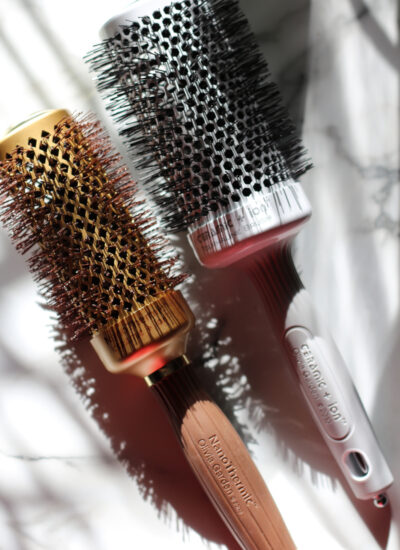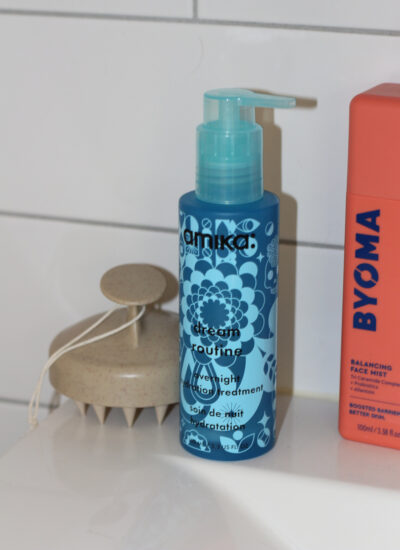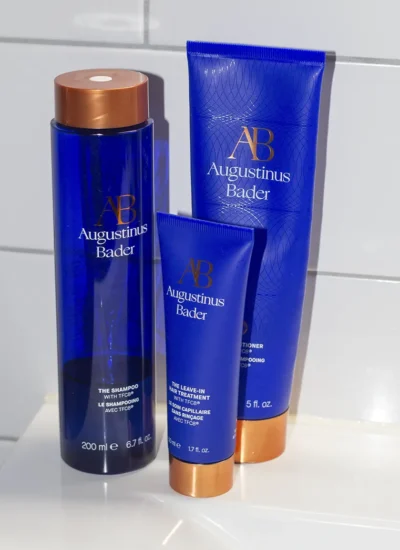
Here are two tinted sunscreens that don’t get the attention they deserve. This winter I picked up the Avéne B Protect, a BB-ish sunscreen that protects against UV and pollution while evening out the skin with tint that adjusts to your skin tone. And the Bioderma Photoderm AR, that’s made specifically for reactive skin to reduce redness and inflammation. I wanted to do a comparison and give you my thoughts as I could only find one post on reddit comparing these two that I don’t completely agree with. So let’s dig into it!

Packaging
The packaging on both is identical. Like the reddit post mentions, it’s a shame it’s only 30ml. By now, we all think sunscreens should have a standard of at least 50ml considering the amount you should use. But as I was using both during wintertime I wasn’t too bothered by the small amount as I wasn’t slathering 1/4 tsp. Don’t hate on me. At least in Sweden, and unless you’re up in the mountains skiing, you really don’t need the full protection of SPF50 in wintertime.
I do have some theories on why the small amount. I’m guessing both were created for everyday use (like indoor/office/city hangout) and touch-up. Not for sports, the beach, or long hours under the sun. They both have SPF 50 because that ensures that even if the consumer use a moderate amount, they’ll still get an SPF of around 20-25. Which is good enough protection for when spending less than 1 hour outdoors.
Protection
Both use chemical filters and have a high SPF 50+ that protects against UVB and UVA (see reddit post for a list of filters). The post mentions that the Bioderma isn’t water-resistant, however, on Bioderma’s website and packaging it says that it is. So it has a slight advantage to Avéne B Protect that isn’t. With that said, I find the AR sunscreen to be equally easy to wash off as the B Protect.
Additional
Avéne B Protect is fragranced, while Bioderma AR is not. Said to be mildly fragrance, however, it comes off quite intense when you first start using it. I assume the brain registers it as nonthreatening after a while, as I haven’t thought much of it later on. But for anyone sensitive to fragrance or wants to avoid it, you might want skip this one. I personallly am sensitive, but it depends on the scent. Some I absolutely hate, others I can live with.
On another note, I found both to sting my eyes, Bioderma AR a little more so than Avéne B Protect. But only later during the day when I foolishly have been touching my face to then poke my eye. Otherwise, I’ve personally been able to apply and spread both pretty close around the eye without tearing up.

Avéne B Protect Texture & Feel
The Avéne B Protect comes out white but uses microencapsulated pigments that adjust to your skin tone upon application. As you massage it in the pigment gets released. The final result is a light neutral beige that leans more towards a red/cool tone. The coverage is light to medium and gives the skin a more perfected BB-cream/foundation look. The shade match is a bit lighter than my overall natural skin tone (MAC NC30-ish) and does give me a slight ghost face. I can get away with it if I’m wearing a turtle neck. The upside is that makeup applies beautifully on top to reduce some of the paleness. I have not experienced any pilling with this. Even the Kosas Tinted Face Oil (renowned for extreme pilling!) was applied on top without a fuss.
I was expecting the B Protect to be hydrating but, at least during winter, I found it to be a bit lacking. Besides the thermal water and vitamin E, there aren’t many additional skin-conditioning ingredients like in the Bioderma AR. The cream feels light on the skin and the finish is radiant without looking dewy. I love that it has a bit of coverage even though the shade match isn’t perfect.
For whom? All skin types. But perhaps, if you have dry skin, don’t lean on this during winter.


Top swatch: Bioderma AR. Bottom: Avéne B Protect.

Bioderma Photoderm AR Texture & Feel
The Bioderma Anti-Redness SPF50 has a light neutral tint that leans more towards yellow that fit me better. The tint itself is lighter than my skin color, but the coverage is very sheer. It feels more like the tint is only there to offset any white cast. On me, it melts right in and disappears, leaving no obvious white cast or tint. The formula itself feels light and hydrating on the skin. While it somewhat neutralizes redness, it doesn’t cover much like the B Protect. But instead, it has ingredients like Licorice extract and Ginkgo Biloba that work on toning down redness and inflammation instead of covering it up.
This one does make the skin look dewy, which settles and tones down within an hour depending on your skin. It might not be the best option for oily skin types though. The AR also has more skin-conditioning ingredients and hydrating sugars. During winter and spring, this has been working better for my skin. I’m a bit unsure if the formula isn’t a bit too hydrating for the summer though? I will have to repurchase and update you on how I feel.
The Reddit post complains about the AR to pill excessively. I personally have not experienced much of it? Even here, the Kosas Tinted Face Oil applied beautifully on top and made a wonderful combo. However, I did experience slight pilling when reapplied. But nothing too bothersome compared to other sunscreens I’ve tried. I think sometimes it has a lot to do with what you use underneath or how the product reacts with one’s sebum even. I also don’t agree that when reapplied it would give you the look of too much foundation on as I find the tint to be very sheer when spread out. The B Protect however can give off that vibe as it has more coverage.
For whom? Dry, Dehydrated to normal/combination skin. Also, lovely for acne-prone skin that’s not oily.
Conclusion
As I finished the two I leaned more towards Bioderma AR to be the favorite. But would repurchase both! Bioderma has the upper hand as the tint suits me better. Although the tint doesn’t have much coverage I much prefer and will stand behind any sunscreen that doesn’t give me a white cast. It’s also more hydrating (without being heavy), fragrance-free, and supposed to be water-resistant. While the B Protect has some antioxidant effect, the ingredients for toning down redness and inflammation in AR felt better suited for my acne-prone skin. I found my skin to look more even and calm with regular use. Unless I find something else, I will definitely return to this one next winter.
What I like about the Avéne B Protect is that it has more coverage. It makes the skin look like your skin but better and more even and worked great as a primer. In peak winter, at my palest, the tint actually didn’t look too bad on me. I also liked how it sets. It’s not dewy but more foundation radiant and natural-looking. I also think it works better for summer as it doesn’t give off a sweaty look. But that’s pretty much all it has going for it in terms of what I value.
If I could have the best of Bioderma AR and Avéne B Protect in a 50ml bottle I’d be a happy girl!
I hope this was helpful in deciding which one to get.







